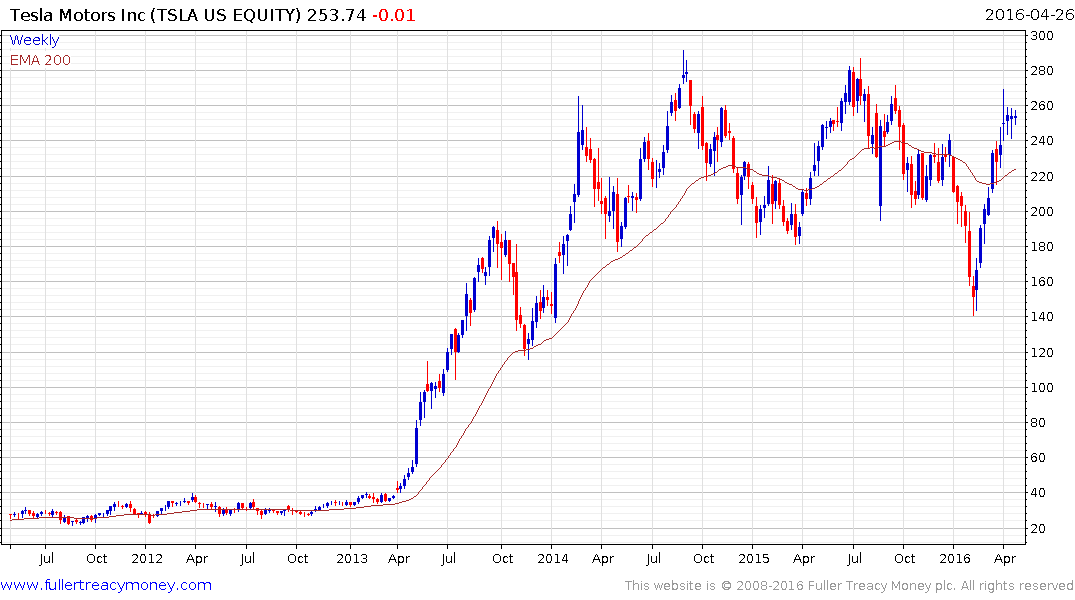Email of the day on stops
The piece that you wrote on Tesla immediately made me think of the "stop loss" technique that you teach at the seminar. It seems to me that Tesla shareholders who are worried about its share price would do well to use stop losses now and in the future.
Thank you for an email of general interest. I have to admit I feel increasingly conflicted about the use of stops. On the one hand they are useful because they force us to think about when to decide to get out. On the other they represent siren calls to increasingly sophisticated programs informing them of where people have decided to exit positions.
Too often I have placed stops where I believe it is reasonable to do so, taking the consistency of the price action, the potential for a drawdown and volatility of the instrument into account, only to see it triggered and prices rally subsequently. Einstein’s definition of insanity is doing something over and over again and expecting a different result so I have felt under pressure to evolve my attitude to stops.
At The Chart Seminar we talk about viewing the price action bereft of any trend lines or indicators because they represent psychological crutches that separate us from viewing the market as it is represented in the raw data. We talk about having the confidence and humility to allow the market unfold as it will while catering our strategy to respond to events as they unfold.
My question is whether stops are in fact a crutch in the same way indicators are? Could it be that by outsourcing the decision to sell to an inconsistent event we are in fact attempting to tell the market what to do rather than responding to events? I have some more thinking to do on this subject and I don’t think there is going to be a definitive answer because there are times when a stop is required and others when it is not.
I can only tell you what I am doing with my own trades. I seldom use stops anymore because above all else they have not been a successful way to mitigate risk for me. That means I have to take a more proactive approach to position sizing, in taking profits when positions are going well and closing positions when they clearly deteriorate. I have to make a decision about what has to happen in order for me to take a profit and for accepting that my decision to hold on was wrong before I initiate the position. .
Tesla has just about doubled since January and has paused in the region of the 2015 peak. I think it is correct to be thinking more about taking some profits than buying more at these levels. However I’m not sure placing a stop is the correct course of action because it would have to be below $240 and below $220 would probably be more appropriate for an investor. The price today is around $250 so those represent significant drawdowns and there is a risk that prices could rally from those levels. This is a volatile share which has been confined to an even more volatile range for two years.

For a leverager trader I think Tesla lends itself more to a buy low / sell high swing trading strategy while an investor should really be looking to take advantage of occasional wild pullbacks to increase a position in (Buffett style) long-term growth stories or at most take some profit when they are clear overextended relative the trend mean.


